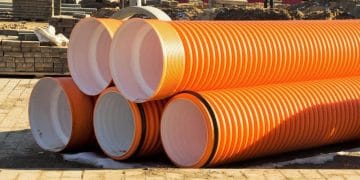Baker Hughes announced the commercial release of its SPECTRE frac plug, the first in the industry to completely disintegrate downhole after fracturing, at ATCE 2015 on Monday. The plug eliminates coiled tubing (CT) interventions, accelerates completion times and leaves behind an unobstructed production inside diameter (ID) for maximum flow area and easy future access.
The SPECTRE plug was made possible only through the application of nanotechnology and the marriage of seemingly incompatible properties—high strength and rapid degradability,†said Jim Sessions, V.P., Technology, Completions and Wellbore Intervention. “This distinctive combination delivers plug-and-perf efficiency and flexibility that no other plug currently provides.
As with a traditional frac plug, the SPECTRE plug enables flexible stage placement. But unlike traditional plugs and even other disappearing downhole plugs, however, the entire SPECTRE plug—including the plug body, anchoring grip and packing element—disintegrates fully at predictable rates when exposed to wellbore fluids. Complete disintegration ensures that no plug debris are left downhole, thereby protecting the well infrastructure from undissolved components, which can compromise wellbore integrity, restrict access and complicate operations, such as future well rejuvenations.
The SPECTRE plug’s innovative design leverages a high-strength, controlled electrolytic metallic (CEM) nanoconstructed material developed by Baker Hughes. Much of the plug body is formed from the same CEM material used in the company’s IN-Tallic disintegrating frac balls, which inaugurated an era of higher efficiency for multistage hydraulic fracturing by eliminating the time, cost and health, safety, and environmental risks associated with milling out frac balls.
Development locations and plug setting depths are not constrained by the availability and/or finite horizontal reach of CT, allowing operators to access more feet of pay zone, in more locations. The SPECTRE plug’s virtually unlimited treatment depths also enable operators to achieve more reservoir contact per wellbore to reduce surface infrastructure and costs, while creating a more environmentally responsible operating footprint.

















































